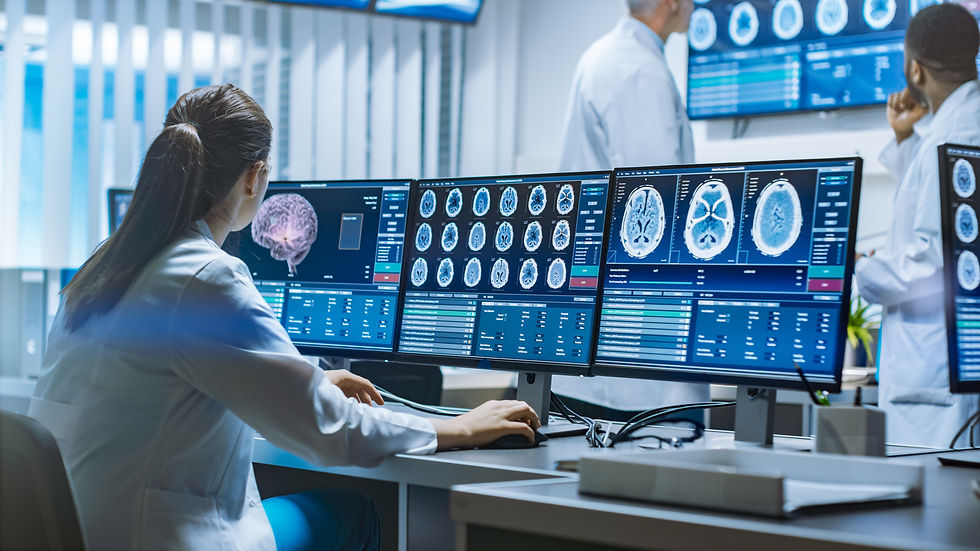
1. Pharmacological Treatments

Levodopa: This is the cornerstone of Parkinson's disease management and is particularly effective in alleviating motor symptoms like bradykinesia, rigidity, and tremors. It is often combined with carbidopa to enhance its efficacy and reduce side effects. Long-term use can lead to complications such as motor fluctuations and dyskinesias, necessitating careful monitoring and dosage adjustments.
Dopamine Agonists: Medications such as pramipexole and ropinirole stimulate dopamine receptors and can be used as initial treatments or adjuncts to levodopa, especially in younger patients. They can delay the need for levodopa and help manage symptoms, but may have side effects like impulse control disorders.
MAO-B Inhibitors: Selegiline and rasagiline help inhibit the breakdown of dopamine in the brain, providing symptomatic relief and potentially slowing disease progression. Studies suggest these can improve quality of life and delay motor symptoms in the early stages of the disease.

2. Physical Therapy
Physical therapy plays a crucial role in managing Parkinson’s disease. Tailored exercise programs can improve mobility, flexibility, and strength, which are often compromised in patients. Specific techniques focus on gait training, balance exercises, and strength building. Research indicates that regular physical therapy can reduce falls and enhance functional independence, significantly improving patients' quality of life.
3. Speech and Occupational Therapy
Speech Therapy: Many Parkinson's patients experience speech and swallowing difficulties. Speech-language pathologists can help improve articulation, volume, and swallowing techniques, utilizing strategies such as the Lee Silverman Voice Treatment (LSVT) program, which has shown efficacy in enhancing vocal loudness and clarity.
Occupational Therapy: Occupational therapists assist patients in adapting their daily activities to maintain independence. They may suggest modifications to the home environment, recommend assistive devices, and teach strategies to manage fine motor tasks. This holistic approach helps enhance the patient's ability to perform activities of daily living.
4. Exercise
Regular physical activity is essential for Parkinson's patients. Evidence supports various forms of exercise, including aerobic activities (like walking or cycling), strength training, and flexibility exercises. Innovative programs like dance (especially tango) and tai chi have gained attention for improving motor skills, balance, and overall wellbeing. Studies indicate that exercise can also help mitigate non-motor symptoms, such as depression and cognitive decline.
5. Deep Brain Stimulation (DBS)
DBS is a surgical intervention indicated for patients with advanced Parkinson’s who have motor symptoms poorly controlled by medication. The procedure involves implanting electrodes in specific brain regions, which can modulate neural activity and alleviate symptoms. Research has shown that DBS can significantly improve motor function, reduce medication requirements, and enhance quality of life, although it is not suitable for all patients.
6. Diet and Nutrition
While research in this area is still evolving, a balanced diet is believed to support overall health in Parkinson's patients. Diets rich in antioxidants—found in fruits, vegetables, and whole grains—may help combat oxidative stress associated with the disease. Omega-3 fatty acids, found in fish and flaxseeds, are also being studied for their neuroprotective effects. Additionally, maintaining hydration and regular meal patterns can help manage gastrointestinal symptoms and optimize medication absorption.
7. Psychosocial Support
Mental health is a critical component of comprehensive Parkinson’s care. Many patients experience anxiety, depression, and social isolation. Counseling, psychotherapy, and support groups can provide emotional support and coping strategies. Programs that focus on mindfulness and stress reduction have also shown benefits in improving mood and overall quality of life.
8. Cognitive Interventions
Cognitive decline is a significant concern for many Parkinson's patients. While research is ongoing, cognitive training programs, memory exercises, and engaging in mentally stimulating activities can help maintain cognitive function. Early intervention and continuous cognitive support are crucial for managing these non-motor symptoms effectively.
Conclusion
A comprehensive, multidisciplinary approach tailored to the individual patient is essential for effective Parkinson's disease management. Regular follow-ups with healthcare providers allow for adjustments in treatment plans, ensuring that interventions remain aligned with the patient’s evolving needs and preferences. Integrating pharmacological, therapeutic, and lifestyle interventions can significantly enhance the quality of life for those living with Parkinson’s disease.

Commentaires